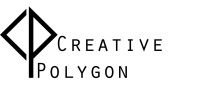This tutorial is about Moving, Scaling and Rotating Textures in Displacement Modifiers. I experimented with the displacement modifier and found out some interesting things and tricks. This I want to show you in a tutorial on how to model and illuminate a wax candle.
Introduction
Hello 3D-Modelliers, yesterday evening was a special day for me. In Germany it became cold again and fall starts to kick in. The temperature decreased to something like 5° celcius, at least it felt like that.
That’s why I cooked a can of tea, sat down in front of my screen and realized that it is already October and almost Halloween.
What else can be done on cold rainy evenings and with a good cup of tea inside? Right! Blender tutorials.
The Idea
I have an imagination of a spooky Halloween scene consisting of a weird formed old black witch house, some pumpkins, black trees and bluish moonlight (shadow).
To start so i recently performed a pumpkin tutorial from xx on youtube. Although the final result hasn’t looking perfect it should still be sufficient for some pumpkin creations. Especially because these pumpkins are not focused on this scene.
However, a pumpkin needs light inside. Normally Halloween addicts put a candle inside the pumpkin but we all know that for such a scene a simple spot light could be sufficient.
Nevertheless I found a tutorial on youtube where the modelling, animation and illumination of the candle light has expressed in a way with a more or less professional result. Of ourse all apart from the audio quality. Find the link to the tutorial below.
I focused more on the candle stem as on the material and animation. The candle light animation is not so important at all for this small project.
As the tutorial of blenderpal shows the stem is modified with a displacement modifier to get an uneven, bumpy surface.
Unfortunately I found out that textures in displacement modifiers cannot be modified to easily. Moving the texture somehow on the surface is not possible and the texture modification differs completely from the normal material approach. So you cannot change the location, the scale or the rotation of textures which are applied to displacement modifiers. Meaning you have no influence on the modification itself except the few attributes the displacement modifier conains like the depth of the applied texture.

Modelling a candle of wax
And here is where the tutorial really starts!
Basic Stem
For the creation of the base of the wax candle you need to extrude a circle to create volume. You can also follow the previously mentioned tutorial.
Vertex Group
Once you were able to model the basic shape you should introduce a new vertex group. The group contains only the top vertices and not the bottom vertices. The small hole where the wick will be placed can also be omitted. The selection should look something like in the picture below.

These vertices are used in the displacement modifier. The resulting model should now look like this.

The following settings of the texture and the displacement modifiers has been used.


Advanced Stem
To bring more ‘life’ to the candle we should modify the base a little bit. Introducing a little hole for the wick is one thing but let the candle leak its wax is another. For that it is necessary to extend the one site of the candle and let the wax flow to the bottom. To do so you have to change to edit mode and move the vertices to your desired candle shape. The result could look like this.

Adding additional displacement modifiers
The idea behind adding additional displacement modifiers to create different levels of detail to the candle. First vertices of the basic shape are used in the first vertex group and the the displacement modifier. Secondly the ‘slide’ where the wax will leak builds the second vertex group and the second displacement modifier. The bottom of the leakage is the third and last vertex groupd and displacement modifier. See the pictures below and their explanation.



Trick with Textures and Displacement Modifiers
For the textures I mostly used the blender cloud texture and modified it to my needs. Unfortunately the texture feature lacks of certain modification attributes like move, scale and rotate. Although the general scale feature is available for the texture scaling a specific scale direction for e.g. Z-axis is not possible! The following trick helps you to adjust the displacement modifiers to your desired result.
Creating an Empty Object
For the candle object I want the part to be streched where the wax flows down the slide. Meaning the previously mentioned second vertex group is used in the displacement modifier. Here it is called ‘DispWaxFlow’ and the vertex group is named ‘fine’. The important setting is the ‘Texture Coordinate’ which is set to Object. For this we need to define an empty object and reference it here. The empty is called ‘EmptyWaxFlow’. Find the full settings below.

Stretch the Texture
The picture below shows the empty scaled by 1:1:1. The resulting object is shown below. Because the vertices are applied to the displacement modifier it looks bumpy but it does not look like wax flowed down this part. By the way besides scaling you can also rotate or move the empty to get a desired result.

After setting the Z-scale to a very high value, like 120 (instead of 1) the texture is streched along the Z-axis and this can be seen on the second vertex group. See the picture below for the result. The orange cross of the empty indicates again the scale factor.

Finalizing the Candle
Applying a material to the specific parts of the candle and creating the fire and whick can be done with the help of the tutorial which has been mentioned above. Thank you for reading








Leave a Reply
You must be logged in to post a comment.